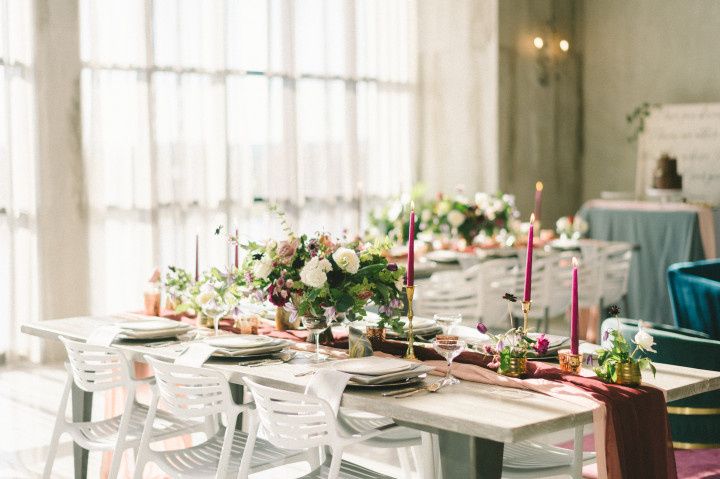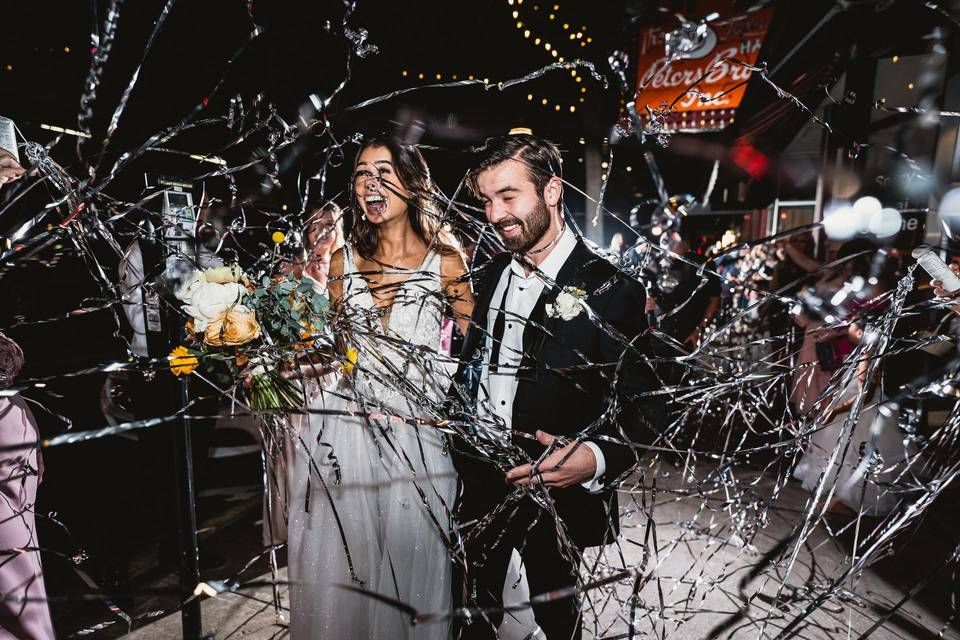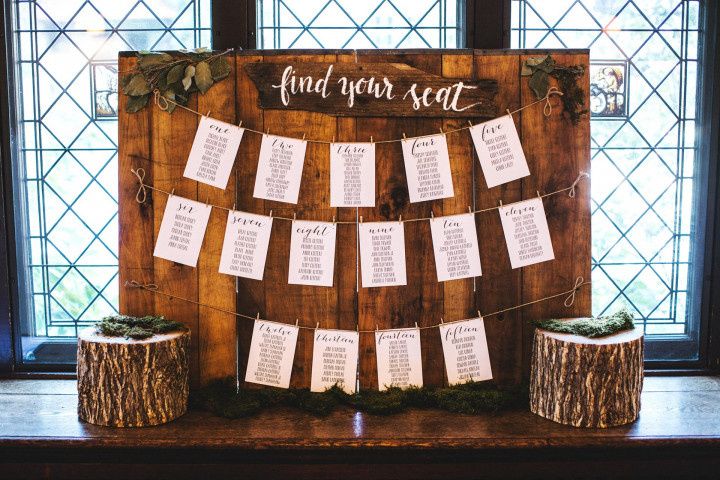6 Wedding Seating Chart Etiquette Don'ts
Here are five things to avoid when considering your wedding seating chart etiquette—from the politics of who sits with whom to placing kids, singles, and more.

Figuring out wedding seating chart etiquette is kind of like doing a puzzle. Except that you have to deal with people versus inanimate objects. You have to juggle friends and family members, along with their many personalities, last-minute RSVPS, and the physical set-up of your wedding venue. You want your reception to feel like a joyful celebration, not a high-school cafeteria. Bottom line is, deciding on your wedding reception seating is a lot to handle, so we’re here to help.
Ready for the 411 on wedding seating chart etiquette? Here's an easy list of "don'ts" to help you navigate the process!
Don’t seat the elderly right next to the band or DJ.
The grandmas and grandpas at the wedding should probably be seated away from the reception music and any sound equipment, especially if they’re hard of hearing. It can already be tough for the older folks to hear one another and you don’t want them to struggle just to have a simple dinner conversation. They’ll be happier to converse with one another, and they can move to the dance floor if they feel up to it later in the night.
Don’t seat feuding guests near each other.
Chances are you’ve got a family members or friends that may not see eye to eye. If that’s the case, use your best wedding seating chart etiquette and try your best to seat them far away from one another. This is probably a smart move in cases of divorced parents who don’t have the smoothest relationship. Ask your parents and your future in-laws to disclose any potential drama between relatives or friends, then a look at the wedding reception seating layout and try your best to make sure they won’t cross paths.
Don’t forget about kids.
Whether you decide to have a table specifically for kids under 12, or you decide to seat them with their parents, it’s important you have a strategy for wedding reception seating etiquette when it comes to the little ones. Don’t place them at just any empty seat; see what makes sense for your layout. Keeping the kids all at one table and providing them with some light-hearted entertainment (coloring books, temporary tattoos, etc.) may prevent them from getting antsy. However, seating them with their parents may keep their behavior in check. Talk to the children’s parents to see where the kids will feel most comfortable, and try your best to work with their requests. It may depend on their age—a two-year-old might need to sit near his or her parents, but a 10-year-old may rather be with others his or her own age.
Don’t overcrowd tables.
It's poor wedding seating chart etiquette to try to shove as many people as you can at one table (depending on the size of your tables, the most that can probably fit per table is around 8 to 10 guests). If you have a large group of college or high school friends, break them up into two tables right next to each other. They can always move around and catch up after dinner if they want to mingle with other guests. Don’t worry, your guests will have fun regardless.
Don't seat single guests together just because they're single.
One of the biggest wedding seating chart etiquette faux-pas: Lumping all of your single guests at a "singles table." While yes, it might be nice if your wedding reception results in a love connection, too-obvious matchmaking can make things super-awkward. Instead, seat your single guests at tables where they know their tablemates from other parts of life (college friends, work colleagues, etc.)—they're more likely to have a good time, and will appreciate catching up with friends and loved ones.
Don’t be too predictable.
That being said, don't be afraid to mix up your wedding reception seating when appropriate. Put a little thought into your wedding reception seating arrangements and think about which of your friends and family members have similar interests and would likely get along. This is particularly helpful if you have smaller groups of friends or family members who might not complete a table. Weddings are a fabulous place for guests to meet new people and have great conversation! On the same note, be sure to switch things up from the rehearsal dinner seating arrangements so people have a chance to talk to other guests.





